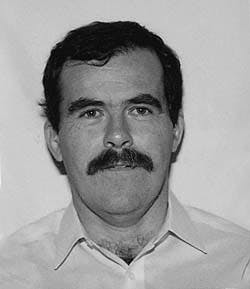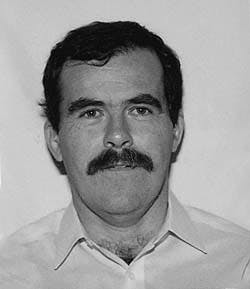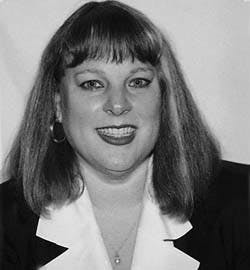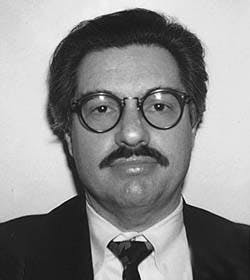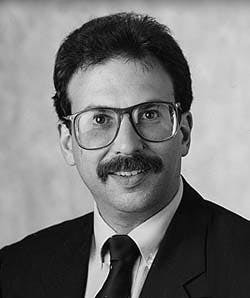A study to compare several emerging sulfur-removal/recovery processes against a baseline Amine/LO-CAT II process has indicated that some emerging processes, though not yet commercialized, show considerable potential for reducing costs.
Specifically, the major findings were that Double Loop and CrystaSulf, developed by Radian International LLC, Austin, were the least expensive capital-cost processes by a significant margin and that Marathon Oil Co.'s Hysulf's cost has the potential to compete with Double Loop and CrystaSulf.
Offshore developments
An increasing portion of future U.S. gas supply is likely to come from offshore, primarily Gulf of Mexico.Because this gas can be sour, the industry has sought lower cost H2S-removal/recovery processes for treating it. Usually the gas contains <5 tons/day (tpd) of sulfur.
For several years, the Gas Research Institute (GRI) has been involved in developing processes to lower the cost of natural-gas production and processing.1
A significant portion of this program has been research, development, and evaluation of processes for small-scale H2S removal and sulfur recovery.
In order to determine the most promising processes, GRI commissioned M.W. Kellogg to compare emerging technologies and their costs. The results would then guide GRI in allocating research funds.
Subquality gas
Recent projections show that demand for gas will grow steadily while the need will exist to produce the gas at similar or lower cost.2Furthermore, future production will likely include a larger amount of subquality gas, often containing sulfur in small amounts. Currently, 15-20% of U.S. gas production is treated for H2S removal.2
Additional gas production is likely from offshore reserves. Today, approximately 25% of U.S. production is from offshore wells.3 However, offshore reserves are roughly 40% of total reserves.4
Projections are for offshore natural gas to provide an even greater portion of U.S. production and for deeper wells to play a major role. Deeper reserves tend to be of lower quality, especially with respect to H2S content.5
It should be noted, however, that other than Mobile Bay production from the Norphlet trend, Gulf of Mexico reserves and production have been typically sweet.
The development of sulfur removal/recovery technology suitable for offshore use should be viewed as "preventive medicine" rather than technology meeting a current need.
The future need for such technology will also depend on the regulatory environment.
To the extent required, the cost to the industry of treating the gas and recovering the sulfur will be considerable.
With current technology, the operating costs for chemicals alone in most redox sulfur plants of <5 long tpd capacity are ($300/ton of sulfur. it is estimated that over the next decade, chemical costs for small-capacity plants (onshore and offshore) will total $300 million.
Small-scale removal
While medium and large scale H2S removal and sulfur-recovery applications have employed and continue to employ Amine/Claus plants, this approach does not work well at smaller sulfur capacities.Several liquid redox sulfur-recovery technologies have been commercialized over the last decade to meet the needs of these smaller sulfur plants.
These processes have not provided complete solutions, however, and more research and testing are needed to overcome such problems as foaming and plugging in high-pressure applications, as well as unacceptably high chemical costs.6
Other technologies, either variants of the redox processes or of caustic treating, have been proposed recently, but these emerging technologies have not been thoroughly tested in natural-gas applications.
Much of GRI's focus in recent years on small-scale H2S removal has been on liquid-redox systems, such as Stretford, ARI-LO-CAT II, SulFerox, and, to a smaller degree, Bio-SR.
While GRI initially conducted research into Stretford technology, concern over potential environmental liabilities associated with vanadium and the U. S. industry's movement away from this approach resulted in GRI's focusing on the iron-based redox processes.
These processes are currently dominated by LO-CAT and SulFerox, but Bio-SR also shows promise because of the low chemical costs, although it is not proven in natural gas treating.
To date, GRI has tested two liquid redox processes (ARI-LO-CAT II and SulFerox) at high pressure.7 8
While there are a large number of operating LO-CAT and SulFerox units, neither LO-CAT nor SulFerox gives satisfactory performance at high gas pressures, resulting in the need for an upstream amine unit when pressures are greater than 500 psi.
Thus, Amine/LO-CAT II was chosen as the baseline process for the study.
Comparisons
The study compared the following processes to the baseline Amine/LO-CAT II process: Bio-SR, Amine/Thiopaq, Hysulf, Double Loop, and CrystaSulf.
It has long been known that caustic can remove acid gas to extremely low levels, but chemical costs for caustic processes are usually prohibitive.
Recently, however, the Thiopaq process was introduced in which a caustic solution is used to absorb H2S from the gas at supposedly much lower costs.
The Hysulf process, by employing a nonaqueous solvent with a high sulfur solubility, attempts to avoid the sulfur-deposition problems that plague the iron chelated liquid-redox processes.
Even more recently, Radian International LLC introduced two new processes, Double Loop and CrystaSulf, both promising to reduce further the cost of H2S removal.
Double Loop employs two solvents, the first an organic physical solvent used to absorb the H2S from the gas, and the second an aqueous iron-chelate solution which reacts the H2S with the redox couple.
The process thereby claims to avoid sulfur plugging in the absorber while producing larger sulfur particles in the second loop. That makes the sulfur easier to separate.
CrystaSulf employs a single organic solution that absorbs the H2S. The sulfur produced by oxidizing the solution with air is then crystallized.
Specifications
The design basis for the feed and product is given in (Table 1 [52,095 bytes]). The treated gas was required to meet pipeline specification. The minimum sulfur recovery sought was 99.9%.Since the solvent used in the Hysulf process claims to be able to dehydrate the gas, the product gas was specified to contain (7 lb/MMscf of water.
With the exception of Hysulf, this meant that a glycol unit would be required. Sulfur could be produced as a cake or in the molten form.
The limit on moisture content of the cake was held to 40% but no further requirements on cake quality were specified in the design.
Block flow diagrams for the offshore plant are shown in (Fig. 1 [41,796 bytes]). Process descriptions of LO-CAT II, Bio-SR, Thiopaq, and Hysulf have been given at several past GRI sulfur-recovery conferences (1993, 1994, 1996). The Double Loop and CrystaSulf processes have been briefly described.9
Seawater was chosen as the cooling medium. Fuel gas was obtained from flash gas where possible. If the flash gas did not contain H2S, the design basis assumed it could be used as fuel.
If the amount of flash gas exceeded fuel-gas volumetric requirements, the design basis assumed that the excess could be used to serve other platform users.
If the flash gas contained H2S, three options were available:
- Scrub flash gas with a slipstream of solvent and then use as fuel.
- Recompress and send to high pressure absorber.
- Send to flare.
It was assumed that the power generator set would provide power to all potential users. This would include all platform users. The costs of power would be the incremental capital and operating cost.
Another study assumption was that an existing onboard flare or incinerator system would be available with sufficient capacity to handle the vapor emissions. Further, the design basis assumed that no incremental costs were to be included for use of the existing flare and/or incinerator.
A dedicated hot-oil system provided heat. A dedicated water maker was installed to upgrade seawater to process water (preferred over transporting treated water from shore).
Storage times for make-up chemicals, make-up water, and sulfur product are given in Table 1 as are plant manning costs. The design basis for the offshore platform is given in (Table 2 [9,089 bytes]).
The study first compared the processes technically.
Process performance
All processes were capable of meeting pipeline H2S specification (4 ppm H2S in treated gas) at a pressure of 1,000 psi (Table 3 [12,321 bytes]).Hysulf was the only process with dual capability to dehydrate and desulfurize the raw gas. All other processes required a glycol unit to meet the dehydrated gas specification of 7 lb/MMcf water.
Solution circulation was an extremely important process-performance parameter because of the pressure differential between absorption (1,000 psi) and regeneration (atmospheric).
The circulations for the Bio-SR, Double Loop, and CrystaSulf processes depend only on the total H2S to be removed and are independent of H2S partial pressure.
The Double Loop process had the lowest circulation of all the processes (referring to the high-pressure loop).
Process complexity. Each process option consisted of a complex of multiple (amine, sulfur recovery, glycol) units. The number of process services and process equipment items for the "sulfur-recovery unit" of the complex varied (Table 4 [17,131 bytes]).
Process services refers to equipment items in a given service, so that an item of rotating equipment is counted as one service, even if it is spared.
Likewise, if a heat exchanger has multiple shells or a bioreactor is split into more than one vessel, it was counted only as one service.
Table 4 also shows the process services and total equipment count for the amine and glycol units.
Utility requirements. The tabulated utilities are displayed in (Table 5 [15,707 bytes]).
Most of the total operating power requirement is associated with the high-pressure circulation pump and the air blower of the H2S removal/sulfur-recovery process.
Cooling-water requirements are made up of the cooling-water supply to the water maker as well as water used in cooling-water exchangers. The temperature rise over the cooling-water exchangers was not identical for all processes.
Most of the sulfur-recovery processes did not have a heat-input requirement. LO-CAT II has a solution-heater requirement (which depends on the ambient temperature).
Hysulf has a heat requirement to satisfy the catalyst-bed inlet temperature specification. There are heat requirements associated with the amine unit for LO-CAT II and for Thiopaq.
The tabulated fuel-gas consumptions are for heating requirements only. In order to satisfy the fuel-gas demand, the source of fuel gas is first flash gas (if available and free of H2S) and then treated gas.
The Hysulf process does have some flash gas, but since it is not free of H2S, it is recompressed and returned upstream of the absorber. For most processes, the flash gas produced exceeds heating fuel-gas requirements, and the excess flash gas is then used to provide all or part of the power requirements.
The flash-gas pressure showed variations, but a more rigorous design basis for the study could have been used to ensure that all process licensors used the same flash-gas pressure.
Although the conversion of H2S to sulfur results in the production of water, all processes, with the exception of CrystaSulf, require make-up water.
This water compensates for water losses with the treated gas, water lost with the solvent, and moisture in the sulfur cake, for instance.
Chemical costs. The chemical make-up costs (Table 6 [12,808 bytes]) are distributed between process, amine (where applicable), and glycol (except Hysulf). Hot oil make-up costs are considered insignificant and therefore excluded.
The number of chemicals refers to the sulfur-recovery process only. As can be seen from the tables, most of the chemical make-up costs (except for amine/Thiopaq) are associated with process make-up chemicals.
Strengths, weaknesses
In addition to the tabulated comparisons, each process has a number of strengths and weaknesses.The natural-gas industry has long sought a single step or direct-treat H2S removal-recovery process capable of operating at high pressure while avoiding problems with sulfur plugging and foaming.
Direct-treat LO-CAT II has not yet been commercialized at pressures greater than 600 psi, and the other processes have not been tested at high pressure.
Sulfur plugging and foaming should not be as much of a problem if sulfur is not formed in the absorber (as occurs in Hysulf) and may be easily managed if the only sulfur in the absorber is what is carried with the solution (as occurs in Thiopaq, Double Loop, and CrystaSulf).
The industry wish list also includes a process that could simultaneously remove H2S and dehydrate the gas, but Hysulf is the only process that claims it can do this.
All processes are expected to be forgiving of variations in gas flow and H2S feed composition, but this has only been proven for LO-CAT, Bio-SR, and Thiopaq.
All processes should prove relatively immune to motion factors when employed offshore, although the study did not consider sensitivities of level control in detail.
From an environmental standpoint, it is desirable that processes have little or no blowdown, but in Thiopaq, there is a relatively large blowdown stream because not all H2S is converted to sulfur.
A much smaller amount of salt formation occurs in Double Loop, but no blowdown is required since the salts are purged with the moisture in the sulfur cake.
Processes that avoid complex chemistry are preferred.
The Bio-SR iron solution does not have chelates, and like caustic solutions used in Thiopaq, the process chemistry is simple.
LO-CAT has complex chemistry; however, the long-term stability of the chemicals is known from the large number of operating units.
Double Loop, CrystaSulf, and Hysulf all possess complex chemistry, the long-term stabilities of the chemicals are not fully known, their sulfur-removal abilities for mercaptans and organic sulfur untested, and their potential problems from contaminants uncharted.
The Double Loop and CrystaSulf processes produce large sulfur particles, making sulfur separation easier than for the other processes.
Economic differences
Investment (?25%) and total costs were prepared for all processes and then compared to the baseline Amine/LO-CAT II process. The Double Loop and CrystaSulf processes were found to have the lowest investment costs (Fig. 2 [17,311 bytes]).These costs included the base plant costs, platform structural costs, incremental power costs, initial charge of chemicals, start-up costs, and royalties. The major investment was for base plant costs.
The major findings of the economic evaluation were that Double Loop and CrystaSulf were the least expensive capital-cost processes by a significant margin and that Hysulf's cost has the potential to compete with Double Loop and CrystaSulf.
Total costs followed the same trends as capital costs (Fig. 3 [18,222 bytes]).
The total costs included variable operating and maintenance (VOM) costs (such as utilities, chemical make-up, maintenance, taxes and insurance, and plant manning) and capital-related costs based on a payout of 5 years. No credit was taken for the sulfur product.
Plant manning costs showed little variation between the processes. Maintenance, taxes, and insurance were all estimated as a function of capital costs, and represented 80% of the VOM costs.
Of the other 20% of the VOM costs, chemical costs were high for LO-CAT II, Double Loop, and Hysulf when compared to the other processes, and utility costs were much lower for Double Loop and CrystaSulf than for the other processes.
CrystaSulf had substantially lower costs for chemicals than Double Loop, however, and although its capital cost was equal to or higher than Double Loop, the reduction in chemical costs made CrystaSulf the lowest total cost process.
Future research
The study results indicate that several yet-to-be-commercialized processes have great potential for reducing costs.The results were interesting in that processes not yet commercialized were found to be the most economic.
Amine/LO-CAT II is commercially proven; the Bio-SR process has had pilot plant demonstrations in Japan using sour and acid-gas feeds and has been commercially proven in service other than natural gas (although none was at high pressure).
The Thiopaq process has been commercially proven in services other than natural gas, but, similar to Bio-SR, these were low-pressure applications.
The remaining processes have no commercial applications but have been tested in the laboratory. Double Loop has had a 100-hr bench scale test unit, however, that operated in the field on natural gas.
The study results indicate opportunity but also the need for caution: opportunity through the eventual commercialization of a process with lower costs than today's benchmark process but caution against raised expectations from reading too much into the results of this study.
Since Double Loop, CrystaSulf, and Hysulf have not yet been commercialized, the claims for the processes stem largely from laboratory testing.
Without pilot plant testing, claims on scale-up, operating problems, and chemical costs cannot be verified.
GRI's strategy will be to bring the promising processes identified by this study further along toward commercialization and industry acceptance. For these processes, there remains considerable uncertainty over what will be the true cost of the process once commercialized.
To minimize this uncertainty, GRI and the licensors are communicating on potential test sites and sharing the results of more focused marketing and economic studies of the processes.
Further, GRI has concluded licensing agreements with Marathon Oil Co. (for Hysulf) and Radian International LLC (for Double Loop and CrystaSulf) which give sufficient incentives to these companies to commercialize these promising technologies at an acceptable pace.
References
- Leppin, D., and Cicchetti, E., "Sulfur Recovery from Natural Gas," Sulphur, 1996. No. 246.
- Hugman, R.H., Vidas, E.H., and Springer, P.S., "Chemical Composition of Discovered and Undiscovered Natural Gas in the Lower-48 United States-1993 Update (3 vols.)," GRI Report No. GRI-93/0248.1, .2, .3., 1993.
- Francois, D.K., "Federal Offshore Statistics: 1993; Leasing Exploration, Production, and Revenue as of December 31, 1993," MMS Report No. MMS 96-0060, 1994.
- Gascher, R.A., "Facts about Offshore Natural Gas," MMS Report No. MMS 94-0069, 1994.
- Thorpe, H., "Oil and Water," Texas Monthly, Vol. 24 (2), February 1996, pp. 86-93, 140-45.
- Leppin, D., Dalrymple, D.A., "Overview of Liquid Redox Technology for Recovering Sulfur from Natural Gas," 46th Laurance Reid Gas Conditioning Conference, Norman, Okla., Mar. 3-6, 1996.
- Holloway, C.S, "GRI Testing of ARI-LO-CAT II for the Direct-treatment of High-Pressure Natural Gas at NGPL's Kermit, Texas Site," GRI-96/0007, Final Report, Gas Research Institute, March 1996.
- McIntush, K.E., Petrinec, B.J., "GRI Testing of SulFerox for the Direct-treatment of High-Pressure Natural Gas at NGPL's Kermit, Texas Site," GRI-94/0432, Final Report, Gas Research Institute, April 1995.
- Dalrymple, D.A., DeBerry, David, and Thompson, Pat, "CrystaSulf Process for Desulfurizing Natural Gas and Other Streams," 47th Laurance Reid Gas Conditioning Conference, Norman, Okla., Mar. 2-5, 1997.
The Authors
Michael P. Quinlanis a principal process engineer with M.W. Kellogg Co., the international engineering and construction arm of Dresser Industries Inc., Houston. He has 24 years of gas processing and sulfur experience in Canada and the U.S., 8 of which have been with Kellogg. Quinlan holds a BE in chemical enginering from University College Dublin (Ireland) and is a member of AIChE.
Linda W. Echterhoff is a project engineer with M.W. Kellogg Co., the international engineering and construction unit of Dresser Industries Inc., Houston. She is project manager of the firm's technical evaluation and product-development activities with Gas Research Institute. Echterhoff holds a BS and MS in chemical enginering from Rice University and an MBA from Houston Baptist University.
Dennis Leppin is principal project manager for gas processing at the Gas Research Institute, Chicago. He was previously with the Institute of Gas Technology, Chicago, where he was manager of coal gasification process research. Leppin holds a BE (1971) and an ME (1972), both in chemical engineering from the City College/City University of New York and an MBA from the University of Chicago (1979). He is a member of SPE and the Licensing Executives Society and is a registered professional engineer in Illinois.
Howard S. Meyer is a principal project manager for gas processing with GRI where he has worked for 16 years.Meyer holds BE and ME degrees in chemical engineering from the University of Illinois, Chicago, and the University of Idaho and is a member of AIChE, ACS, and the North American Membrane Society.
Copyright 1997 Oil & Gas Journal. All Rights Reserved.
